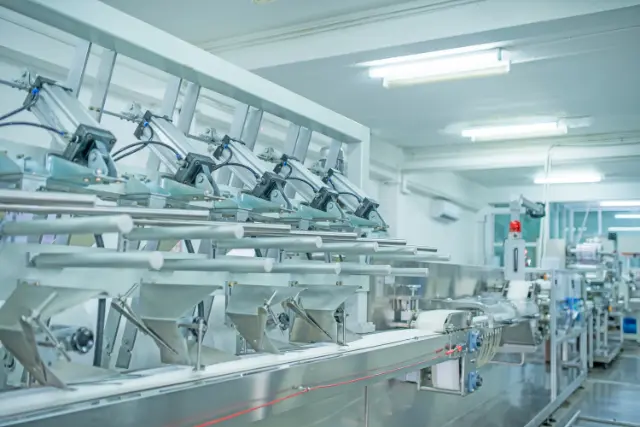Cost Estimation Automation: A Game-Changer for Real Estate Projects
Cost estimation is a critical aspect of any real estate project. It helps developers and contractors determine the feasibility of a project and secure funding. However, traditional cost estimation methods are often time-consuming, error-prone, and lack accuracy.
The Challenges of Cost Estimation in Real Estate
- Data collection: Gathering cost data from multiple suppliers can be a tedious and time-consuming process.
- Data accuracy: Manually entering data into spreadsheets can lead to errors, which can have a significant impact on the accuracy of the cost estimate.
- Lack of standardization: Different companies use different methods to estimate costs, which can make it difficult to compare bids and select the best contractor.
Cost Estimation Automation with Python, AI, and Cloud
Cost estimation automation can help to overcome these challenges by streamlining the process and improving accuracy. Python, AI, and cloud-based solutions can be used to:
- Automate data collection: RPA tools can be used to automatically collect data from suppliers’ websites or databases.
- Populate cost estimation templates: AI-powered tools can be used to automatically populate cost estimation templates with relevant data.
- Generate accurate cost estimates: Cloud-based solutions can be used to run complex algorithms and historical data to generate accurate cost estimates.
By automating the cost estimation process, real estate developers and contractors can save time, reduce errors, and improve the accuracy of their bids. This can lead to increased efficiency, profitability, and success in the competitive real estate market.

Python, AI, and Cloud’s Role in Cost Estimation Automation
Unattended Bots
Python can be used to develop unattended bots that can automate the entire cost estimation process, from data collection to report generation. These bots can run 24/7 without human intervention, which can save businesses a significant amount of time and money.
For example, an unattended bot could be used to:
- Collect data from multiple supplier websites
- Populate cost estimation templates
- Generate cost estimates
- Send cost estimates to clients
Attended Bots
Attended bots are designed to assist human workers with tasks. They can be used to automate repetitive or time-consuming tasks, such as data entry or calculations.
In the context of cost estimation, attended bots could be used to:
- Help users to select the appropriate cost estimation template
- Provide real-time guidance on how to fill out the template
- Check for errors in the cost estimate
Attended bots can be customized to meet the specific needs of each business. This level of customization is not possible with RPA/workflow tools orchestrators.
Cloud Platforms
Cloud platforms offer a number of benefits for cost estimation automation, including:
- Scalability: Cloud platforms can be scaled up or down to meet the needs of any business.
- Reliability: Cloud platforms are highly reliable and offer 99.9% uptime.
- Security: Cloud platforms offer a number of security features to protect data and applications.
- Cost-effectiveness: Cloud platforms are typically more cost-effective than on-premises solutions.
AI
AI can be used to improve the accuracy and efficiency of cost estimation automation. For example, AI can be used to:
- Identify and extract data from unstructured documents, such as contracts and invoices.
- Analyze data to identify trends and patterns.
- Make predictions about future costs.
Specific AI techniques that can be used for cost estimation automation include:
- Image recognition: Can be used to identify and extract data from images, such as invoices and receipts.
- Natural language processing (NLP): Can be used to analyze text data, such as contracts and emails.
- Generative AI: Can be used to generate new data, such as cost estimates and reports.
By using Python, AI, and cloud platforms, businesses can automate the cost estimation process and improve accuracy, efficiency, and profitability.

Building the Cost Estimation Automation
The cost estimation automation process can be divided into the following sub-processes:
- Data collection
- Data analysis
- Cost estimation
- Report generation
Data Collection
The first step is to collect data from a variety of sources, such as supplier websites, databases, and spreadsheets. This data can be collected using Python scripts or RPA tools.
Data Analysis
Once the data has been collected, it needs to be analyzed to identify trends and patterns. This can be done using Python libraries such as Pandas and NumPy.
Cost Estimation
The next step is to use the analyzed data to generate cost estimates. This can be done using Python scripts or cloud-based machine learning models.
Report Generation
The final step is to generate a report that summarizes the cost estimates. This report can be generated using Python scripts or cloud-based reporting tools.
Data Security and Compliance
It is important to ensure that the data used in the cost estimation process is secure and compliant with all applicable regulations. This can be done by using encryption and access controls.
Python vs. No-Code RPA/Workflow Tools
Python is a more powerful and flexible language than no-code RPA/workflow tools. This makes it a better choice for building complex cost estimation automation solutions.
Algorythum’s Approach
Algorythum takes a different approach to cost estimation automation than most BPA companies. We use Python to build custom solutions that are tailored to the specific needs of our clients. This approach has several advantages:
- Flexibility: Python is a very flexible language that can be used to build a wide range of automation solutions.
- Scalability: Python scripts can be easily scaled up to handle large volumes of data.
- Security: Python scripts can be encrypted to protect sensitive data.
By using Python, Algorythum can build cost estimation automation solutions that are more powerful, flexible, and secure than solutions built with no-code RPA/workflow tools.

The Future of Cost Estimation Automation
The future of cost estimation automation is bright. As technology continues to develop, we can expect to see even more powerful and sophisticated solutions.
Some of the future possibilities for cost estimation automation include:
- The use of AI to improve accuracy and efficiency. AI can be used to identify trends and patterns in data, which can lead to more accurate cost estimates. AI can also be used to automate the entire cost estimation process, from data collection to report generation.
- The use of cloud computing to scale and secure automation solutions. Cloud computing can be used to scale automation solutions to handle large volumes of data. Cloud computing can also be used to secure automation solutions by providing encryption and access controls.
- The integration of automation solutions with other business systems. Automation solutions can be integrated with other business systems, such as ERP and CRM systems. This integration can streamline the cost estimation process and improve efficiency.
Subscribe to Us
To stay up-to-date on the latest trends in cost estimation automation, subscribe to our blog. We also encourage you to contact our team to get a free feasibility and cost-estimate for your custom requirements.
Contact Us
[Contact Form]
We look forward to hearing from you!

Algorythum – Your Partner in Automations and Beyond
At Algorythum, we specialize in crafting custom RPA solutions with Python, specifically tailored to your industry. We break free from the limitations of off-the-shelf tools, offering:
- A team of Automation & DevSecOps Experts: Deeply experienced in building scalable and efficient automation solutions for various businesses in all industries.
- Reduced Automation Maintenance Costs: Our code is clear, maintainable, and minimizes future upkeep expenses (up to 90% reduction compared to platforms).
- Future-Proof Solutions: You own the code, ensuring flexibility and adaptability as your processes and regulations evolve.









